Greater Solar Energy Harvesting with Nano Electronics
 A variety of sources are available for energy collection in natural world. One of the available renewable energy resources is solar energy, which is by far the most abundant. More energy is provided to the Earth by sunlight radiation within one hour than is consumed yearly by the entire human civilisation across the world.
A variety of sources are available for energy collection in natural world. One of the available renewable energy resources is solar energy, which is by far the most abundant. More energy is provided to the Earth by sunlight radiation within one hour than is consumed yearly by the entire human civilisation across the world.
Hydrogen South Africa – HySA
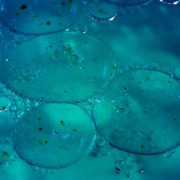 South Africa plays an important role in the ‘Hydrogen Economy’ in an effort to establish clean and reliable alternative energy sources. Hydrogen energy is being considered as one of the most plausible choices for alternative energy and as an energy-carrier, due to the abundance of elemental hydrogen on the planet.
South Africa plays an important role in the ‘Hydrogen Economy’ in an effort to establish clean and reliable alternative energy sources. Hydrogen energy is being considered as one of the most plausible choices for alternative energy and as an energy-carrier, due to the abundance of elemental hydrogen on the planet.
Enabled Nanotechnologies for Energy Harvesting
 Nanotechnology research, development and application are relevant and potentially beneficial to almost every facet of our live. Many benefits of nanotechnology rely on the possibility to alter the structures of materials at extremely small scales to achieve specific properties which improve the materials’ capabilities.
Nanotechnology research, development and application are relevant and potentially beneficial to almost every facet of our live. Many benefits of nanotechnology rely on the possibility to alter the structures of materials at extremely small scales to achieve specific properties which improve the materials’ capabilities.
Nanotechnologies that Mimic Nature
 “Developed nanoproducts are inspired by nature”. So say Musee, Foladori and Azoulay from the Council for Scientific and Industrial Research in the publication ‘Social and Environmental Implications of Nanotechnology Development in Africa’.
“Developed nanoproducts are inspired by nature”. So say Musee, Foladori and Azoulay from the Council for Scientific and Industrial Research in the publication ‘Social and Environmental Implications of Nanotechnology Development in Africa’.
Nanotechnology and Piezoelectricity
 Several ways and means have been established for the conversion of mechanical energy into electricity, generally by way of electromagnetic induction, static-electricity generation, or piezoelectric materials. Vibration-based mechanical energy is ever-present in the environment and readily accessible.
Several ways and means have been established for the conversion of mechanical energy into electricity, generally by way of electromagnetic induction, static-electricity generation, or piezoelectric materials. Vibration-based mechanical energy is ever-present in the environment and readily accessible.
Improving Energy Transmission with Nanotechnology
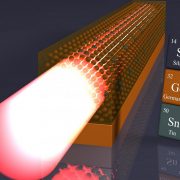 Applications of nanotechnology are delivering both expected and unexpected solutions to the challenges that are facing society. Nanotechnologists are finding applications in traditional energy sources and are greatly enhancing alternative energy approaches to help meet increasing energy demands.
Applications of nanotechnology are delivering both expected and unexpected solutions to the challenges that are facing society. Nanotechnologists are finding applications in traditional energy sources and are greatly enhancing alternative energy approaches to help meet increasing energy demands.
Drug delivery of insulin through nanotechnology
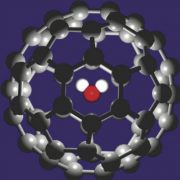 Successful administration of therapeutic proteins such as insulin via the oral route has long eluded the drug delivery community. A variety of factors, both physical and physiological, have hindered the myriad approaches to increasing the bioavailability of orally administered therapeutic proteins.
Successful administration of therapeutic proteins such as insulin via the oral route has long eluded the drug delivery community. A variety of factors, both physical and physiological, have hindered the myriad approaches to increasing the bioavailability of orally administered therapeutic proteins.
Nanomedicine in SA: the future and the concerns
 In an effort to catch up with global trends, South Africa launched its first nanotechnology innovation centre in 2007, with the Department of Science and Technology (DST) stressing that the country was ready to create an environment conducive to harnessing the potential benefits of nanotechnology.
In an effort to catch up with global trends, South Africa launched its first nanotechnology innovation centre in 2007, with the Department of Science and Technology (DST) stressing that the country was ready to create an environment conducive to harnessing the potential benefits of nanotechnology.
The nano drug delivery system in South Africa
 Nanotechnology covers the investigation, design, manipulation, measurement, modeling or fabrication of matter, structures, devices and systems that exist at nanoscale (or at very tiny atomic or molecular sizes).
Nanotechnology covers the investigation, design, manipulation, measurement, modeling or fabrication of matter, structures, devices and systems that exist at nanoscale (or at very tiny atomic or molecular sizes).
The age of nanorobots in medicine
 Imagine being injected with an implant that will ensure you can breathe underwater. Imagine having tiny microscopic bio robots detecting and treating diseases without surgeons, or these little robots becoming little ‘drug factories’ producing pharmaceutical drugs at the specific damaged cell of the body and healing it.
Imagine being injected with an implant that will ensure you can breathe underwater. Imagine having tiny microscopic bio robots detecting and treating diseases without surgeons, or these little robots becoming little ‘drug factories’ producing pharmaceutical drugs at the specific damaged cell of the body and healing it.
Nanomedicine for cancer therapy
 Cancer is known to be a chronic public disease worldwide. It is responsible for more than 6 million deaths per year globally. Research estimates that the cancer death cases will be more than double (12 million) by 2020.
Cancer is known to be a chronic public disease worldwide. It is responsible for more than 6 million deaths per year globally. Research estimates that the cancer death cases will be more than double (12 million) by 2020.
Nanotechnology research on oil compounds
 The most sought-after route for administering medicine is oral, due to its ease and convenience for patients. Oral medicines need to be sufficiently water soluble for them to be taken up from the intestine, however, the majority of newly-discovered pharmaceutical compounds are poorly soluble in water.
The most sought-after route for administering medicine is oral, due to its ease and convenience for patients. Oral medicines need to be sufficiently water soluble for them to be taken up from the intestine, however, the majority of newly-discovered pharmaceutical compounds are poorly soluble in water.
Symposium on nanomedicine and cancer in South Africa
 The Nanotechnology Public Engagement Programme, an initiative of the Department of Science and Technology, and Nabio Consulting (Pty) Ltd presented a symposium on the impact of nanotechnology on cancer. The symposium was held on 25 October 2016 at the National Zoological Gardens in Pretoria.
The Nanotechnology Public Engagement Programme, an initiative of the Department of Science and Technology, and Nabio Consulting (Pty) Ltd presented a symposium on the impact of nanotechnology on cancer. The symposium was held on 25 October 2016 at the National Zoological Gardens in Pretoria.
The power of nanotechnology
![]() Imagine if a laptop could weigh less than 100 grams or a water filter had enough efficiency to clean more water in half the time current water filters take? Better yet, imagine wearing just one coat in extreme cold or taking a single tablet or capsule to cure all known chronic diseases?
Imagine if a laptop could weigh less than 100 grams or a water filter had enough efficiency to clean more water in half the time current water filters take? Better yet, imagine wearing just one coat in extreme cold or taking a single tablet or capsule to cure all known chronic diseases?
Treating mining waste water
 Acid mine drainage (AMD) in the Gauteng City-Region has been described in the media as a ticking time bomb after it was officially reported to have begun surfacing from old mining works on the West Rand in 2002. AMD from abandoned mine shafts and dumps poses a threat to clean water.
Acid mine drainage (AMD) in the Gauteng City-Region has been described in the media as a ticking time bomb after it was officially reported to have begun surfacing from old mining works on the West Rand in 2002. AMD from abandoned mine shafts and dumps poses a threat to clean water.
Nano-composites could provide a solution to clean and safe water
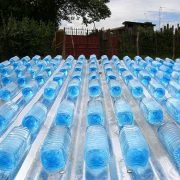 Reliable research over the last decade has shown an ever rising number of people falling sick and dying due to consumption of unsafe water. About 1.2 billion people in the world, with 450 million living in Africa, do not have access to clean, potable drinking water.
Reliable research over the last decade has shown an ever rising number of people falling sick and dying due to consumption of unsafe water. About 1.2 billion people in the world, with 450 million living in Africa, do not have access to clean, potable drinking water.
The future of nanotechnology and water research
 Technology has been critical in providing clean drinking water. Today’s water filtration and purification models are based on the orthodox tried and tested models developed in the 21stCentury. To put it simply, developing civilisations have been on a continuous journey to ensure water availability.
Technology has been critical in providing clean drinking water. Today’s water filtration and purification models are based on the orthodox tried and tested models developed in the 21stCentury. To put it simply, developing civilisations have been on a continuous journey to ensure water availability.
Science and Technology Minister opens nanomaterials facility
 Science and Technology Minister Naledi Pandor officially opened the new Department of Science and Technology (DST) and Council for Scientific and Industrial Research (CSIR) Nanomaterials Industrial Development Facility (NIDF) in December 2015.
Science and Technology Minister Naledi Pandor officially opened the new Department of Science and Technology (DST) and Council for Scientific and Industrial Research (CSIR) Nanomaterials Industrial Development Facility (NIDF) in December 2015.
MSc Nanoscience Postgraduate programme growing in leaps and bounds
 Following on the success of new research centres in nanoscience and nanotechnology established by the Department of Science and Technology, the next major step was to introduce a dedicated postgraduate programme for training in nanoscience and nanotechnology in South African Universities.
Following on the success of new research centres in nanoscience and nanotechnology established by the Department of Science and Technology, the next major step was to introduce a dedicated postgraduate programme for training in nanoscience and nanotechnology in South African Universities.
South Africa needs to start to venture into nanotechnology commercialisation by employing sustainable models
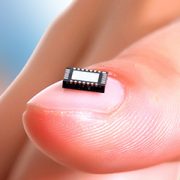 Nanotechnology is no longer just an emerging field of science or science fiction. Many countries already have nano-products in their marketplace. Nanotechnology has the potential to impact many industrial sectors and every economic sector across the globe, with the market for this technology estimated to grow to as much as $3 trillion by 2020.
Nanotechnology is no longer just an emerging field of science or science fiction. Many countries already have nano-products in their marketplace. Nanotechnology has the potential to impact many industrial sectors and every economic sector across the globe, with the market for this technology estimated to grow to as much as $3 trillion by 2020.
The solution to neurodegenerative diseases
 Neurodegenerative diseases (NDD’s) affect lives on a daily basis. These diseases are not geographically confined and their adverse effects on the human body have been, up to now, essentially irreversible. However, some significant progress may have been made towards fighting NDD’s by our own home grown South African scientists.
Neurodegenerative diseases (NDD’s) affect lives on a daily basis. These diseases are not geographically confined and their adverse effects on the human body have been, up to now, essentially irreversible. However, some significant progress may have been made towards fighting NDD’s by our own home grown South African scientists.
Surface Plasmon Resonance for Label-Free Detection of Biomolecular Interactions
 The National Nanotechnology Equipment Programme and Department of Science and Technology initiatives have brought cutting edge nanotechnology tools into the South African research space over several years. In this series of articles we focus a lens on some of the tools that are shaping the nanotechnology research space in South Africa.
The National Nanotechnology Equipment Programme and Department of Science and Technology initiatives have brought cutting edge nanotechnology tools into the South African research space over several years. In this series of articles we focus a lens on some of the tools that are shaping the nanotechnology research space in South Africa.
NMMU’s one stop shop for electron microscopy in the Southern Hemisphere
 Just two years ago Nelson Mandela Metropolitan University became the first institution in South Africa and Africa to acquire an Ultra-high Resolution Transmission Electron Microscope (U-HRTEM). The U- HRTEM pushes the boundaries of cutting-edge research and training of postgraduate students in advanced electron microscopy and nanoscience.
Just two years ago Nelson Mandela Metropolitan University became the first institution in South Africa and Africa to acquire an Ultra-high Resolution Transmission Electron Microscope (U-HRTEM). The U- HRTEM pushes the boundaries of cutting-edge research and training of postgraduate students in advanced electron microscopy and nanoscience.
The xCELLigence Real Time Cell Analyser
 For scientists trying to study how cells respond to different drugs, different conditions or even viruses, perhaps the biggest challenge is getting information in real time during cell culture experiments rather than just at the end of the experiment.
For scientists trying to study how cells respond to different drugs, different conditions or even viruses, perhaps the biggest challenge is getting information in real time during cell culture experiments rather than just at the end of the experiment.
How hip is that? Technology to measure how your body responds to implants
 It’s time to give up on a childhood dream: if Robocop was really constructed in the dystopian 1980s, he would have probably sparked fitfully and fallen over. And that is simply because the human body is not that welcoming towards foreign bodies, never mind silicon chipboards and military-grade weaponry being threaded through it.
It’s time to give up on a childhood dream: if Robocop was really constructed in the dystopian 1980s, he would have probably sparked fitfully and fallen over. And that is simply because the human body is not that welcoming towards foreign bodies, never mind silicon chipboards and military-grade weaponry being threaded through it.
Screen printing: where art and nanotechnology meet
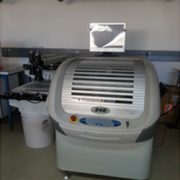 When Johannes Gutenberg designed the first printing press over 500 years ago his big dreams and hopes probably never included the tiny nanoparticles we can print today using screen printers. The DST/Mintek Nanotechnology Innovation Centre (NIC) in Randburg have now obtained a screen printer to make tiny electrodes for their diagnostic products.
When Johannes Gutenberg designed the first printing press over 500 years ago his big dreams and hopes probably never included the tiny nanoparticles we can print today using screen printers. The DST/Mintek Nanotechnology Innovation Centre (NIC) in Randburg have now obtained a screen printer to make tiny electrodes for their diagnostic products.
Focused-Ion Beam Scanning Electron Microscope- looking beneath the surface
 From research on pollen grains to metal oxides, the Focused ion beam scanning electron microscope (FIB SEM) is one of the jewels in the CSIR National Centre for Nano-structured Materials collection of nanotechnology equipment.
From research on pollen grains to metal oxides, the Focused ion beam scanning electron microscope (FIB SEM) is one of the jewels in the CSIR National Centre for Nano-structured Materials collection of nanotechnology equipment.
Nanotechnology Education in South Africa: Coming of age?
 This month in Nature Nanotechnology, a commentary by Rhodes University scientists on Nanoscience and Nanotechnology Education in the country provides some insight into how research, DST strategy, Nanotechnology Innovation Centres and organisations such as SANI and NPEP have helped shape a nanotechnology education in the country.
This month in Nature Nanotechnology, a commentary by Rhodes University scientists on Nanoscience and Nanotechnology Education in the country provides some insight into how research, DST strategy, Nanotechnology Innovation Centres and organisations such as SANI and NPEP have helped shape a nanotechnology education in the country.
What’s in that sample? FTIR – a staple in the nanotechnologist’s toolkit
 The manipulation of materials at the nanoscale has led to the development of bulk products that exhibit improved properties. From clay to polymers, establishing the chemical makeup gives scientists much needed information to help fine-tune studies of new materials.
The manipulation of materials at the nanoscale has led to the development of bulk products that exhibit improved properties. From clay to polymers, establishing the chemical makeup gives scientists much needed information to help fine-tune studies of new materials.
International year of Crystallography
 What do diamonds, snowflakes and salt all have in common? Well, they are all examples of crystals. Crystals are special solids made up of atoms or molecules that join together in a pattern that repeats itself over and over to create a certain shape. It is at the heart of one of science’s most valuable tools, X-ray Crystallography.
What do diamonds, snowflakes and salt all have in common? Well, they are all examples of crystals. Crystals are special solids made up of atoms or molecules that join together in a pattern that repeats itself over and over to create a certain shape. It is at the heart of one of science’s most valuable tools, X-ray Crystallography.
XRD – a staple in the crystallographer’s toolkit
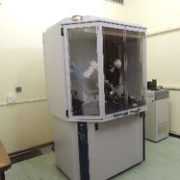 With 2014 being the International Year of Crystallography, we focus this month on the X-ray diffractometer in our equipment section, celebrating modern technology that helps geologists, inorganic chemists and biochemists alike to probe the structure of often unknown compounds.
With 2014 being the International Year of Crystallography, we focus this month on the X-ray diffractometer in our equipment section, celebrating modern technology that helps geologists, inorganic chemists and biochemists alike to probe the structure of often unknown compounds.
Dynamite in Small Packages – Looking at Flow Cytometry
 A flow cytometry (FC) machine is large, bulky and, to the untrained eye, a somewhat boring-looking machine. From the outside, that is. This analytical device holds the key to looking at the inner workings and mysteries of cells and of ourselves.
A flow cytometry (FC) machine is large, bulky and, to the untrained eye, a somewhat boring-looking machine. From the outside, that is. This analytical device holds the key to looking at the inner workings and mysteries of cells and of ourselves.
Developing new nanomaterials with a supercomputer and a mastermind
 Dr Lucky Sikhwivhilu is the Principal Scientist and director of Nanominerals Nanotechnology Unit that operates within the DST/Mintek Nanotechnology Innovation Centre (NIC) in the Advanced Materials Division at Mintek. He is arguably a mastermind in the development of new nanomaterials.
Dr Lucky Sikhwivhilu is the Principal Scientist and director of Nanominerals Nanotechnology Unit that operates within the DST/Mintek Nanotechnology Innovation Centre (NIC) in the Advanced Materials Division at Mintek. He is arguably a mastermind in the development of new nanomaterials.
Nanosight: A new superpower for researchers
 Superman can use x-ray vision to see through walls with but all a nanotechnologist really wishes for is nanovision– the ability to see nanoparticles clearly. Now the Nanosight NS500 is here, and South African scientists can perform the previously impossible: count tiny nanoparticles – from 10 nm to 2000 nm in size – accurately.
Superman can use x-ray vision to see through walls with but all a nanotechnologist really wishes for is nanovision– the ability to see nanoparticles clearly. Now the Nanosight NS500 is here, and South African scientists can perform the previously impossible: count tiny nanoparticles – from 10 nm to 2000 nm in size – accurately.
An orange a day with the help of nanotechnology
 When you walk into the supermarket and buy a pocket of oranges, you probably aren’t thinking about nanotechnology – but a great deal of science goes into getting those oranges into your supermarket trolley.
When you walk into the supermarket and buy a pocket of oranges, you probably aren’t thinking about nanotechnology – but a great deal of science goes into getting those oranges into your supermarket trolley.
Shedding light on phosphors
 Glow-in-the-dark phosphors could be used to paint the walls of housing in underprivileged areas, giving occupants safe light at night. This meringue of glow-in-the dark phosphors was made by combusting chemicals at 700°C with a fuel (like urea), and is then ground into a powder.
Glow-in-the-dark phosphors could be used to paint the walls of housing in underprivileged areas, giving occupants safe light at night. This meringue of glow-in-the dark phosphors was made by combusting chemicals at 700°C with a fuel (like urea), and is then ground into a powder.
New Nano Scanner Takes Imaging to New Levels
 Scanning at resolutions of up to 500 nanometres, Stellenbosch University’s new multi-million rand Phoenix Nanotom S nano CT system – the first and only such machine in Africa – makes even the 1 mm tip of a toothpick seem the size of a giant tree trunk.
Scanning at resolutions of up to 500 nanometres, Stellenbosch University’s new multi-million rand Phoenix Nanotom S nano CT system – the first and only such machine in Africa – makes even the 1 mm tip of a toothpick seem the size of a giant tree trunk.
